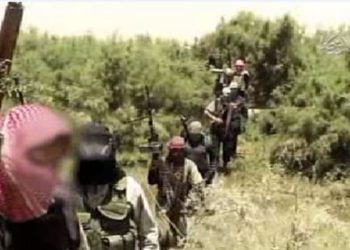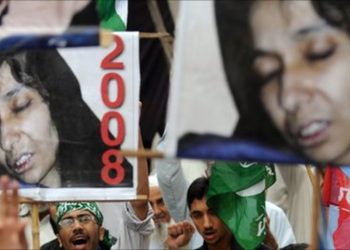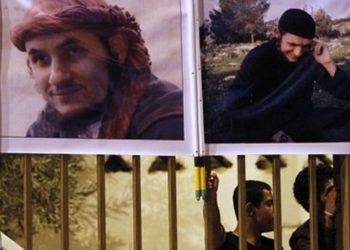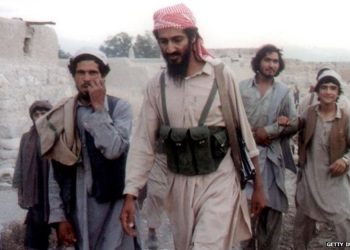The attack on October 7th, 2023, surprised and shocked many when Palestinian militants from the Al-Qassam Brigades, a group linked to Hamas, stormed Israeli barriers. However, the impact of this attack went beyond shaking Israeli security; it was also reshaping security in the region.
The attack has had a significant effect on the security landscape, making armed groups close to Iran more popular. These groups are either funded, influenced by, or allied with Iran, and they have been expanding their recruitment pool, particularly in areas outside their traditional influence such as the West Bank or Jordan.
This, in turn, has provoked a reaction from historically hostile Sunni jihadist groups. The attack on October 7th has reshaped security and emphasized the overlap between states and non-state actors. The policies of the former often cause reactions and behaviour from the latter, including jihadist groups which have lost their ability to recruit in the region in recent years. This analyse will explore the changes in the security landscape in the region after this attack, assess its expected effects, and examine the new dynamics it has brought forth.
US Policy and Middle East Security
Prior to October 7th, President Joe Biden, like his predecessors, formulated his own doctrine, known as the “Biden Doctrine.” This doctrine outlined his five main principles for the Middle East: Partnership, Deterrence, Diplomacy, Integration, and Values.(1) These principles served as general guidelines for the US response to the October 7th attack, solidifying their support for Israel. The US position can be understood on two levels. First, Washington expressed eagerness to sign a Saudi-Israeli agreement, focusing on diplomacy and partnership, which should include the future Palestinian State on the agenda. However, the October 7th attack altered priorities, once again placing Palestinian demands at the forefront of the region. This was affirmed by the Hamas leader, who stated that the attack was about reviving the interest in Palestinian concerns.(2) Second, the US declared that it “stands by Israel and its security unconditionally” and supported Israel’s Gaza operation to eliminate Hamas. The US believed this would pave the way for a two-state solution and facilitate talks between the Palestinians and Israelis.(3)
The Biden administration also linked the Gaza war to other significant security issues, including the Russian war in Ukraine, competition with China, building ties with Saudi Arabia, and troubled relations with Iran. The complexity of the Gaza war has further complicated negotiations with Iran. The high human cost in Gaza resulted in condemnation, with Netanyahu’s stubbornness drawing international criticism. This criticism included the US and the Democrat Party(4) and even led to calls for the ICJ to address the Palestinian tragedy.
As a result, American policy has adopted “The Biden Doctrine,” which dictates that Americans,by focusing on soft power, will only react if they are directly targeted. This approach aims to prevent the conflict from expanding regionally or internationally.
In addition, Washington seeks to limit Iranian activities, Tehran increased its reliance on its allies and proxies, such as Hamas in Gaza, Hezbollah in southern Lebanon, the Houthis in Yemen and the Red Sea, and the Iraqi Shia factions. These groups have been launching attacks in different forms and locations, but their .importance has increased for Iran, to exert pressure on the United State
Iran’s Proxies
During a conversation in Gaza in 2017, one of Hamas’s influential leaders disclosed to the author, “If we [in Hamas] had the choice of having a single state next to us, we would choose Iran.” The ties between Hamas and Iran (particularly regarding support for the revolution in Syria) have caused internal disagreements inside the movement. This disagreement prompted the hawks within Hamas, led by Yahya Al-Sinwar, the head of the movement in the
“American policy has adopted “The Biden Doctrine,
which dictates that Americans, by
focusing on soft power, will only react if they are directly targeted
This approach aims to prevent the conflict from expanding regionally or internationally.
Gaza Strip, to deepen their relationship with Iran, particularly through the military wing of the movement, al-Qassam Brigades. They have benefited from Iran’s assistance in missile production and tactics. However, since October 7th, Iran, in fear of expanding the conflict, has not planned to elevate its ties with Hamas, not even to the level of its ties with Hezbollah. This aligns with Hamas’s desire to preserve its Palestinian identity.
Iran perceives October 7th in the same way it justified its intervention in Syria tosupport Bashar al-Assad’s regime a decade ago. According to Iran’s former Foreign Minister, Abdul Amir Abdullahian, “We defend our cities by defending Gaza,”(5) echoing Ayatollah Khamenei’s statement, “If we don’t stop our enemies [in Syria], they will fight us in Kermanshah and Hamadan.” This perspective is referred to as the “Forward Defence” policy, wherein Iran engages in war beyond its borders due to internal pressure(6).
Once again, relying on armed factions is deemed the most effective option for Iran to exert influence. After October 7th, 2023, Iran’s “Forward Defence” policy has become more realistic. This has increased the importance of local and national Islamic fighting movements in Iran. The recent Gaza war saw Al-Qassam’s tactics being considered effective, leading to an increase in admiration for the movement.
Hezbollah, on the other hand, continues to engage in clashes against Israel, albeit with some dispute on the effectiveness. Furthermore, the Houthis are disrupting international trade in the Red Sea, specifically targeting the world maritime trade for the “Gazan people.” Iraqi factions have been carrying out attacks, even resulting in the deaths of American soldiers in Jordan. Iran leverages the popularity of these groups to exert pressure on the United States,(7) which in turn elicits negative reactions from declining jihadi groups in Arab countries.
The Security Situation in the West Bank
The West Bank is currently living in a semi-war atmosphere, with daily acts of violence such as imprisonments, arrests, house demolitions, crossing difficulties, and restrictions by the Israeli occupation. These acts have resulted in unequal violence by Palestinians, further
complicating the Palestinian National Authority’s ability to govern the territories and cooperate on security with Israel.
The changes among Palestinian youth in the West Bank
and the rising popularity of Hamas, specifically the
Qassam Brigades, in the region, give a framework to understand
the change in security of the West Bank.
The violence in the West Bank has been sporadic but ongoing since October 7th. The changes among Palestinian youth in the West Bank and the rising popularity of Hamas,specifically the Qassam Brigades,in the region,give a framework to understand the change in security of the West Bank.
The situation for young people in the West Bank has undergone significant changes since the violent division between Fatah and Hamas in 2006-2007. As a result, young people have lacked a political framework, especially in the West Bank where Fatah plays a role not only as a political movement but also as a socioeconomic framework intertwined with Palestinian society. This is similar to the role of Al-Qassam in the Gaza Strip today. Searching for a political umbrella has made ending the division between Fatah and Hamas a key demand of the youth movement in the West Bank.
The term “Hirak” (meaning a sociopolitical movement) entered Palestinian discourse after the Arab Spring, with villages like Nabi Saleh, Ni’lin, and Bil’in becoming centres of peaceful protests and cultural activities, similar to those seen in the Arab streets during the Arab Spring. However, attempting to replicate the Arab Spring model in the Palestinian
context did not yield tangible results due to the variety of pressing issues across the occupied West Bank.(8)
Since 2015, there has been a new shift among Palestinian youth, who have carried out individual attacks using tactics such as stabbing soldiers or car-ramming. This has increased tension in the West Bank, leading some to refer to this period as the “Third Intifada.” During this time, I encountered many young men who had relatives or friends involved in such attacks.They denied any political affiliations with Hamas or Fatah and were generally critical of political factions.(9)
Subsequently, young Palestinians in the West Bank began forming their own armed groups, such
as the “Jenin Brigade” and the “Lions’ Den” in Nablus.Although the former is associated with the Islamic Jihad movement, it attracted young people from various backgrounds.The Lions’ Den, on the other hand, was an autonomous group,highlighting the absence of organized political umbrellas for youngPalestinians.
The crackdown on these armed groups by Israeli security and the army has weakened them, which in turn makes Hamas a magnet for young Palestinians in the West Bank due to its increasing popularity.
Hamas’s political leaders, except for Yahya Sinwar, have limited popularity in the West Bank. However, during protests in the West Bank for Gaza since October 7th, demonstrators have been chanting the names of Al-Qassam leaders like Muhammad Al-Deif and Abu Ubaida. Al-Deif is the military leader of the Al-Qassam Brigades, while Abu Ubaida serves as the masked spokesperson for the group.
One of the most famous chants in the West Bank are: “They say Hamas is a terrorist… the entire West Bank is Hamas.” This expression reflects the growing popularity of Al-Qassam, as a military group that could attract frustrated young Palestinians in the West Bank
who are seeking a political identity. It is expected that Al-Qassam’s recruitment and activities in the West Bank will increase, resulting in security changes inthe region.
?The Return of Jihadists
The attack on October 7th, 2023, raised concerns about the resurgence of radical and jihadist groups. However, this was not a direct result of the Gaza war. The regrouping of jihadists is a process that takes time and was already in progress before the October 7th attacks. Several factors contribute to the emergence and decline of jihadist groups, with the most important being financing,recruitment, and incubators, both social and geographical (such as training camps,
as a military group that could attract frustrated young Palestinians
in the West Bank who are seeking a political identity.
It is expected that Al-Qassam’s recruitment and activities in the
West Bank will increase, resulting in security changes in the region.
networks, etc.). These factors can be categorized as hardware and software, using computer terminology. The hardware factors are linked to military actions on the ground, such as attacks andrecruitment networks, while the software factors are linked to propaganda and narrative.
After the Gaza war, these factors became intertwined. Pro-Iranian national- Islamic armed groups gained popularity in the Muslim world, which caused dissatisfaction among Sunni jihadist groups. The jihadists found themselves losing ground to their sectarian rivals.
In order to regain their position in the competition, the jihadists, who had previously rejected the idea of a patriotic struggle in Palestine and insisted on a religious conflict with Jews, attacked the shrine of Qassem Soleimani in January 2024, followed by an attack in Moscow in March 2024.
This may lead to a resurgence of sectarian discourse and could be fuelled by the tragedies of the Gaza war. These events could provide a jihadist narrative that appeals to frustrated young people,who may be recruited.
In recent years, jihadists have been on the back foot after their defeat in Iraq and Syria in 2017, leading them to retreat to Africa and Afghanistan. Utilizing the Gaza tragedy as a narrative could help the jihadists revive their presence in the Arab world.
Additionally, widely believed statements from Gaza serve as perfect anecdotes to reshape the appeal of jihadist recruitment.
These statements include “the West’s hypocrisy,” “the West’s endless support for Israel,” “betrayal of Arab regimes,” “the nation’s departure from its religion
as the cause of all evils and defeat,” “who will protect the children and women of Gaza?,” and “the liberation of Palestine and Al-Aqsa.”(10) Until jihadists can resume recruiting, some frustrated young Muslims may carry out “lone wolf” attacks in the name of Gaza, which the jihadists will take credit for. This will serve their attempt to compete with pro-Iranian national-Islamic groups.
Conclusion
The Gaza war, after October 7, 2024, has reshaped the security landscape in the Middle East, presenting numerous security challenges. Israel is reassessing its defence and deterrence capabilities, while the US is working to solidify its policy in the region. Additionally, national-Islamic armed groups supported by Iran are gaining power, causing tension with jihadist groups.
In order to reposition themselves in the region, jihadist groups aim to capitalize on the brutal Israeli attacks in Gaza, which resulted in the deaths, displacement, and starvation of tens of thousands of Palestinians.
There are currently two levels of analysis of the security landscape in the Middle East. The first is the geopolitical level, which includes the American-Iranian conflict and the regional balances among various players such as Iran, Israel, and Saudi Arabia.
The second level involves non-state players, such as armed national movements and factions. These two levels overlap, as explained after the Gaza war.
This overlapping will lead to further violence in the region due to conflicting interests and ideologies among the parties involved. While states try to avoid broader, open conflicts, non-state actors are responsible for the violence, adopting irregular yet effective and bloody tactics.
(1) Daniel E. Mouton, The post-October 7 US strategy in the Middle East is coming into focus, November 21, 2023, https://www.atlanticcouncil.org/blogs/new-atlanticist/the-post-october-
7-us-strategy-in-the-middle-east-is-coming-into-focus/
(2) See https://www.aljazeera.net/news/2023/10/ أسامة-حمدان-/ 18
للجزيرة-نت-المقاومة-فوجئت
And https://www.arab48.com/- أخبار-عربية-ودولية/صحافة
2023 /قياديون-في-حماس–أعدنا-القضية-الفلسطينية-للطاولة-ونأمل- /11/ دولية/ 08
-بحرب-دائمة
(3) The Economist, How America should manage the next stage of the Gaza war, Nov 29th 2023.
(4) Inside the Democratic rebellion against Biden over the Gaza
war, Reuters, February 27, 20242.
(5) https://www.irna.ir/news/ امیرعبداللهیان-زمان-در-غزه-/ 85260801
رو-به-پایان-است-نتانیاهو-باید-متوقف
(6) Hamidreza Azizi, The Concept of “Forward Defence”:
How Has the Syrian Crisis Shaped the Evolution of Iran’s
Military Strategy?, https://www.gcsp.ch/publications/concept-
forward-defence-how-has-syrian-crisis-shaped-evolu-tion-irans-military-strategy , 3 February 2021.
(7) Polls in the region show such increasing in the popularity
of such groups. One of the conducted in Palestinian Territories
shows that high percentages of Palestinians are “satsfied” with
these regional actors Yemen (i.e Houthis) 80%, Qatar 68%,
Hizbullah 49%, Iran 35%…etc. https://pcpsr.org/ar/node/962.
(8) See, Ahmad Jamil Azem, al-Shabab al-Filastini min al-harka
ila al-Hirak 1908-2018 (Palestinian Youth from Movement to
Protest, 1908-2018), Institute of Palestine Studies, 2019.
(9) The author was the BBC correspondent in the West Bank
during that period for a few months.











